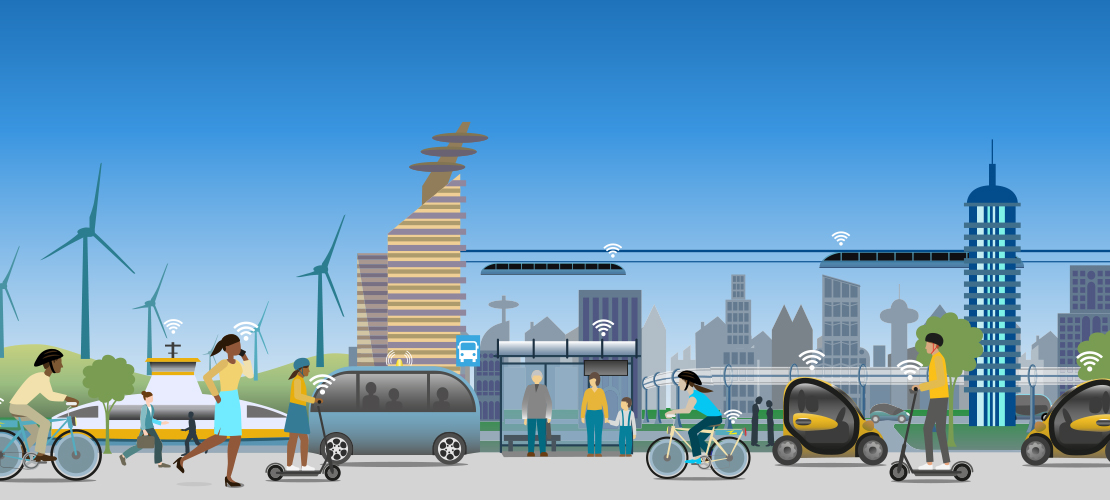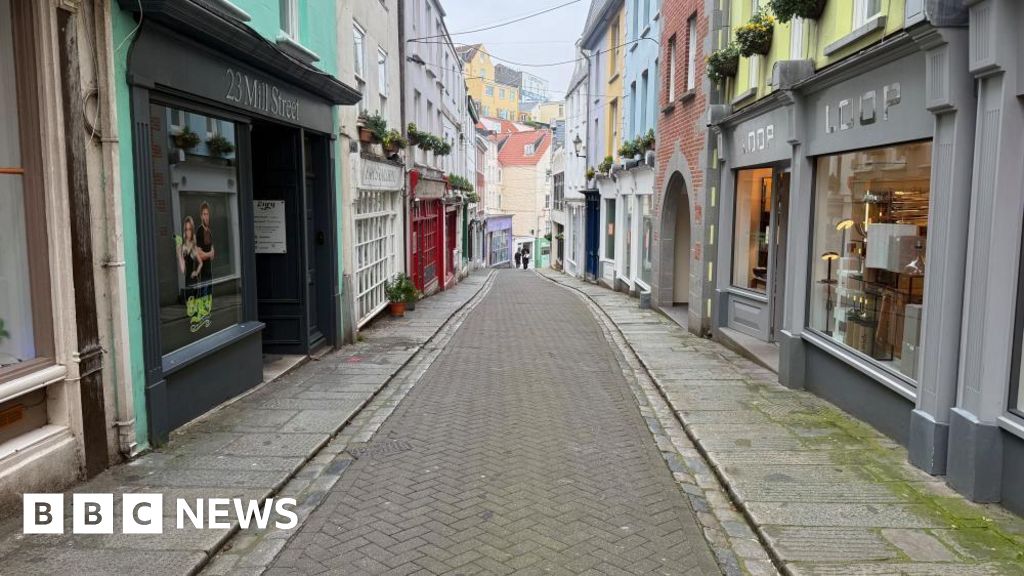Integrating more walking into public transit commuting: a proof-of-concept study – BMC Public Health

Report on Integrating Active Mobility with Public Transport to Advance Sustainable Development Goals
1.0 Introduction and Scope
This report analyzes a proof-of-concept study on the commuting patterns of 2,149 employees traveling to a single workplace, Bar-Ilan University. The research objective was to evaluate the potential for integrating more physical activity (walking) into public transportation (PT) commutes by examining how varying walking distance thresholds affect the availability and efficiency of travel itineraries. The findings provide critical, data-driven insights for achieving United Nations Sustainable Development Goals (SDGs), particularly those related to health, sustainable cities, and climate action.
2.0 Analysis of Findings: Walking Thresholds and Transport Viability
2.1 Impact on Public Transport Accessibility and Efficiency
The study demonstrates a direct correlation between the distance an employee is willing to walk and the viability of using public transport. Increasing walking thresholds from 100m to 2,500m yielded significant improvements in sustainable transport options.
- Coverage and Availability: The number of employees with access to a viable PT route increased dramatically with higher walking thresholds.
- At a 100m walking limit, only 33 employees had a potential PT itinerary.
- At a 2,500m walking limit, 2,135 employees (nearly the entire cohort) could commute via PT.
- Journey Optimization: Increased walking led to more efficient travel by reducing the complexity of routes.
- The average number of transfers required decreased as walking distances increased, with benefits stabilizing beyond a 1,000m threshold.
- For commuters within a 30-minute car journey, overall transit time also declined, as longer walks enabled more direct PT routes.
3.0 Contribution to Sustainable Development Goals (SDGs)
3.1 SDG 11: Sustainable Cities and Communities
The research directly supports SDG Target 11.2, which calls for “access to safe, affordable, accessible and sustainable transport systems for all.”
- The findings confirm that expanding the accepted walking distance to PT stops beyond the standard 500m can substantially increase the reach and effectiveness of existing transport networks.
- By making PT a feasible option for a larger portion of the population, this approach promotes a modal shift away from private vehicles, contributing to reduced traffic congestion and air pollution, which are central to creating sustainable urban environments.
- The availability of multiple stations within a 1,000m radius of the destination underscores how flexible walking thresholds can better leverage existing infrastructure to meet sustainability targets.
3.2 SDG 3: Good Health and Well-being
This study highlights the critical link between sustainable transport planning and public health outcomes, aligning with SDG Target 3.4 (reduce premature mortality from non-communicable diseases).
- Increasing walking thresholds to 1,500m allows commuters to incorporate an average of 9 minutes of walking into their trip to work.
- This integration of moderate physical activity into daily routines is a key public health strategy, as a daily 20-minute walk can significantly reduce the risk of premature death.
- Promoting active travel as part of the commute is a scalable, population-level intervention to foster healthier lifestyles.
4.0 Discussion and Limitations
4.1 Policy Implications and Generalizability
This case study uses real-world origin and destination data to validate what previous simulation studies have suggested: encouraging more walking can unlock the full potential of public transport systems. While the specific context is the Tel Aviv metropolitan area, the principle is broadly generalizable, offering a evidence-based foundation for urban planners and policymakers to promote active mobility as a core component of sustainable transport strategy.
4.2 Limitations and Avenues for Future Research
The study’s conclusions are based on route availability and do not account for qualitative factors essential for promoting walking. Future work must address these limitations to create truly inclusive and sustainable transport systems.
- Infrastructure and Safety: The analysis did not consider the quality of pedestrian infrastructure, such as lighting, weather protection, obstacle-free pathways, and safe crossings.
- Accessibility: The needs of individuals with reduced mobility or those carrying cargo were not factored into the analysis of longer walking distances.
- Walkability Metrics: Future studies should incorporate comprehensive measures of walkability, including the perceived safety and enjoyability of routes, to better predict the actual uptake of active commuting behaviors.
Analysis of Sustainable Development Goals in the Article
1. Which SDGs are addressed or connected to the issues highlighted in the article?
The article addresses and connects to the following Sustainable Development Goals (SDGs):
- SDG 11: Sustainable Cities and Communities: The core of the article revolves around urban transportation, specifically examining how to improve commutes using public transport. It directly discusses making transport systems more accessible and efficient by integrating walking, which is a key component of sustainable urban infrastructure.
- SDG 3: Good Health and Well-being: The article explicitly links the act of walking as part of a daily commute to significant health benefits. It highlights that increasing walking can lead to better health outcomes, stating that “a short walk of 20 min each day can reduce the chance of early death by 25%.” This directly connects the study’s transportation focus to public health and well-being.
2. What specific targets under those SDGs can be identified based on the article’s content?
Based on the article’s content, the following specific SDG targets can be identified:
- Target 11.2: By 2030, provide access to safe, affordable, accessible and sustainable transport systems for all, improving road safety, notably by expanding public transport, with special attention to the needs of those in vulnerable situations, women, children, persons with disabilities and older persons.
- Explanation: The article explicitly names this target, stating, “the United Nations has set in its Sustainability Development Guidelines a target of ‘Affordable and sustainable transport systems’ (Target 11.2).” The entire study is a proof-of-concept for improving access to and the efficiency of public transportation by analyzing how increased walking distances can cover more origins (i.e., serve more employees) and make trips more direct.
- Target 3.4: By 2030, reduce by one third premature mortality from non-communicable diseases through prevention and treatment and promote mental health and well-being.
- Explanation: The article supports this target by focusing on prevention through physical activity. It presents its findings as a “population-based wellness intervention” and quantifies the health benefits, noting that incorporating an average 9-minute walk into a commute contributes to the recommended daily physical activity needed to “reduce the chance of early death.” This promotes a lifestyle change that helps prevent non-communicable diseases.
3. Are there any indicators mentioned or implied in the article that can be used to measure progress towards the identified targets?
Yes, the article mentions and implies several indicators that can be used to measure progress:
- Indicator 11.2.1: Proportion of population that has convenient access to public transport, by sex, age and persons with disabilities.
- Explanation: The article directly references the definition of this indicator when it mentions the UN’s definition of convenient access as being “within 500 m to a stop or a station.” The study’s methodology, which analyzes the number of employees covered (“covered origins”) at various walking thresholds (100m, 300m, 500m, 1000m, etc.), is a direct application of measuring access to public transport. The data on the number of stations available within these distances (“2 stations within 300 m, 4 stations within 500 m”) serves as a direct measure for this indicator.
- Implied Indicators for Target 3.4:
- Daily physical activity duration: The article suggests that the “average from a 9-min walk” and the goal of a “short walk of 20 min each day” can be used as metrics to measure the integration of physical activity into daily routines.
- Modal split in transport: The study measures the number of employees who could potentially switch from cars to a combination of walking and public transport (“PT”). The “number of covered origins” at different walking thresholds is an indicator of the potential shift towards more active and sustainable transport modes.
- Efficiency of public transport journeys: The article uses “average number of transfers” and “transit time” as metrics. A reduction in these figures, as shown in the study when walking distance increases, indicates a more efficient and potentially more attractive public transport system, which can encourage its use and associated physical activity.
4. Table of SDGs, Targets, and Indicators
| SDGs | Targets | Indicators |
|---|---|---|
| SDG 11: Sustainable Cities and Communities | Target 11.2: Provide access to safe, affordable, accessible and sustainable transport systems for all… by expanding public transport. | Indicator 11.2.1: Proportion of population that has convenient access to public transport. (Mentioned in the article as “convenient access to public transport within 500 m to a stop or a station.”) |
| SDG 3: Good Health and Well-being | Target 3.4: Reduce by one third premature mortality from non-communicable diseases through prevention… and promote… well-being. | Implied Indicators:
|
Source: bmcpublichealth.biomedcentral.com
What is Your Reaction?
 Like
0
Like
0
 Dislike
0
Dislike
0
 Love
0
Love
0
 Funny
0
Funny
0
 Angry
0
Angry
0
 Sad
0
Sad
0
 Wow
0
Wow
0



















































.jpg.webp?itok=0ZsAnae9#)























